Lovebirds are popular pets because of their beauty, small size, and endearing habit of sitting together in bonded pairs for long periods of time. Native to Africa, the nine species of lovebirds are among the smallest parrots in the world, growing only 5-7 inches in length. And unlike full-sized macaws, cockatiels, and other such birds that can live up to 60 years, lovebirds survive on average only 10-12 years. This might sound like a strange “advantage” to these animals as pets, but it means adopting a pair is not a lifelong or multi-generational commitment. If you’ve been thinking about bringing lovebirds into your home, you’re at the right place. This article explains lovebird prices, characteristic behaviors, care requirements, and other facts to help you make your decision.
What are Lovebirds?

Lovebirds are monogamous and often spend time sitting with their mate.
©Huy Thoai/Shutterstock.com
Lovebirds are a small species of parrot native to Africa. They are about 5-7 inches long. There are nine different species. Some of them are endangered while others have large habitats and are plentiful. Their main color is green, but the different species have their own distinctive markings around the head and neck. Through mutations or selective breeding, some lovebirds have unusual colors and patterns, making them especially desirable as pets. Lovebirds get their name from their behavior of creating monogamous pairs for life. The pair will often sit together. In the wild, they live in small flocks. Their main diet includes fruits and vegetables, grass, and seeds. A couple of species also eat figs and can be very picky that the variety of fig must be the specific kind from their region of Africa. In captivity, lovebirds live 10-12 years. Unlike related species, they are unable to mimic human speech, but they can learn a few simple syllables if training begins early.
What Are Typical Lovebird Prices in 2024?

Lovebird prices are relatively lower compared to other parrots. The purchase cost largely depends on whether you adopt or purchase the pet from a breeder. Keep in mind that lovebirds suffer greatly from loneliness if kept singly, so please consider purchasing a pair. A pair will also be able to entertain one another and demand less attention from you. At the same time, adopting more than one means they need a cage bigger than normal to put a little distance between themselves now and then.
Adopting a Lovebird

Adopting lovebirds from a shelter saves money, but it may also involve past behavioral problems.
©Diego Tirira / Flickr – License
The cheapest way to acquire a lovebird is from an animal shelter, bird rescue, or online from an owner who wants to re-home their pet. The price of adoption from a shelter can range from $20-$100. Some owners might be willing to give their pets away to a good home, so do your homework on the internet to see what you can find.
There are some downsides to adopting lovebirds. The various species available, ages and colors might be limited. It’s possible, too, that the bird has ended up in a shelter due to abuse, neglect, or uncorrected behavior issues. That makes it important to ask about the pet’s history so that you’ll know what you’re getting into, in terms of necessary training and rehabilitation.
Purchasing From a Breeder
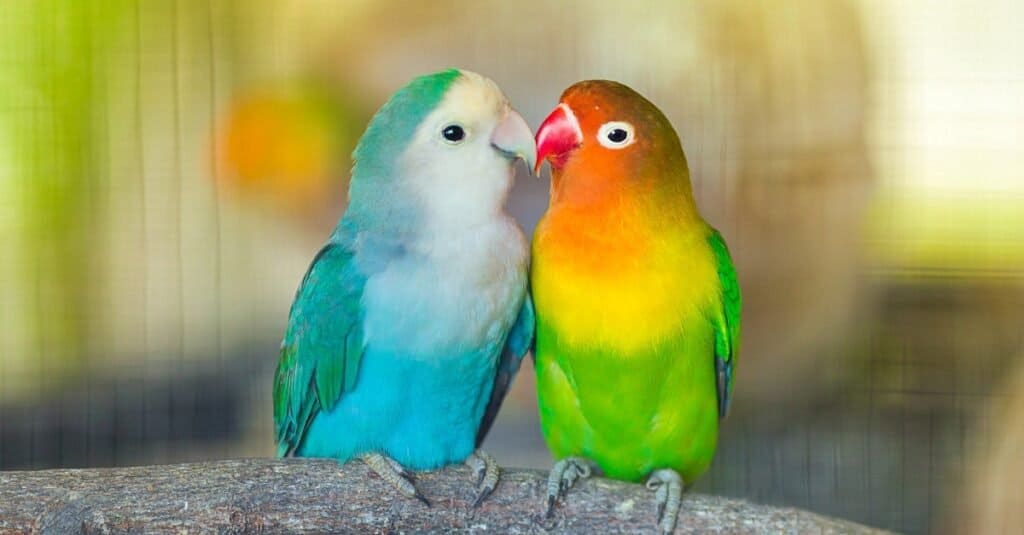
Lovebirds come in a variety of vivid colors. They are prized for their beauty and affectionate behavior.
©iStock.com/apichon_tee
Purchasing from a reputable breeder is the best way to be sure you are getting the species you want at the optimal age, that they are healthy and from a strong genetic line, and that they have not been mistreated by any previous owners. Most breeders sell these birds for $100-$250, but this will vary depending on the state, the reputation of the breeder, and the rarity of the specific type of bird. There can also be a price difference between parent-fed and hand-raised lovebirds. Hand-raised birds are more affectionate to people. Older birds are more expensive than younger ones. A younger bird will take more time and effort to train but will more readily bond to you. Some lovebirds have rare mutations that give them unique color patterns, making them more expensive than those that come in standard colors.
Lovebird Prices Per Species
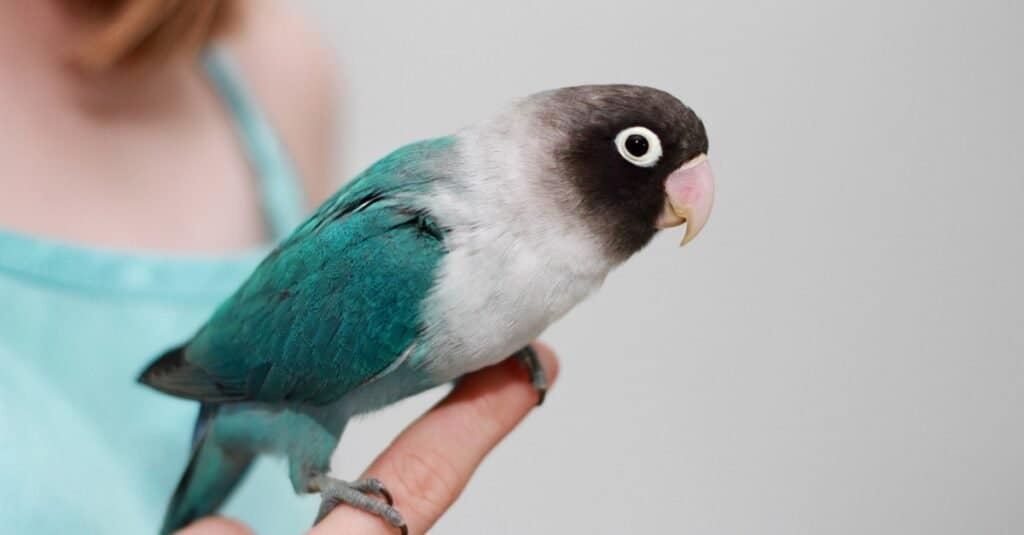
The coloration of a lovebird has a great influence on the price.
©JCM Photos/Shutterstock.com
The nine species of Agapornis lovebirds fetch different prices based mainly on rarity and market demand. Generally speaking, expect to pay anywhere from $50-$400, although an exceptionally rare and desirable lovebird might sell for $1,000 or more. Here’s a brief description of each of the nine species and their average prices:
1. Peach-Faced Lovebird (Agapornis roseicollis)
The peach-faced lovebird is also known as the rosy-faced lovebird or rosy-collared lovebird. Both genders have green bodies with pinkish coloration on the face and throat and blue feathers on their rumps. There are also color variations in this species due to mutations.
Average price 2024: $50 -$150, but rare color mutations can cost up to $200.
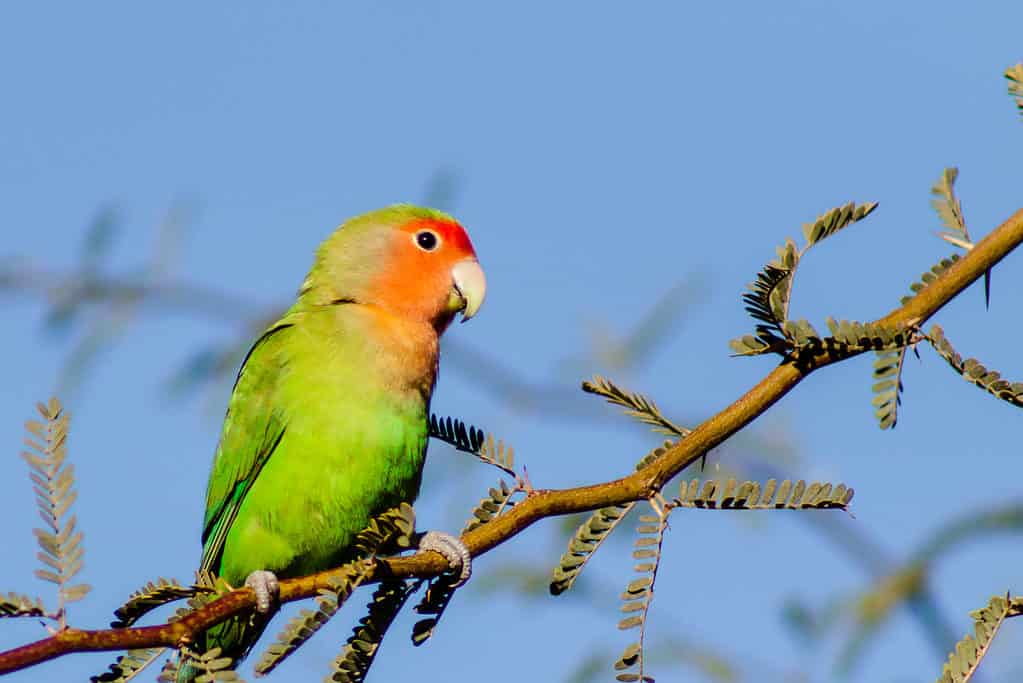
A peach-faced lovebird is a rare sight in the wild.
©South O Boy/Shutterstock.com
2. Fischer’s Lovebird (Agapornis fischeri)
Fischer’s lovebirds get their name from the German explorer Gustave Fischer. Another name for them is the “eye-ring” lovebird because they have white rings around their eyes. This characteristic is not found among other lovebird species. Their characteristic color pattern is a green body, red forehead, and orange face and throat. They can also come in color mutations of lutino, sea green, pied, and yellow. Fischer’s lovebirds have a reputation for being more aggressive to other species than other lovebirds.
Average price 2024: $50 – $150. Rare varieties like the blue Fischer lovebird can cost up to $400.
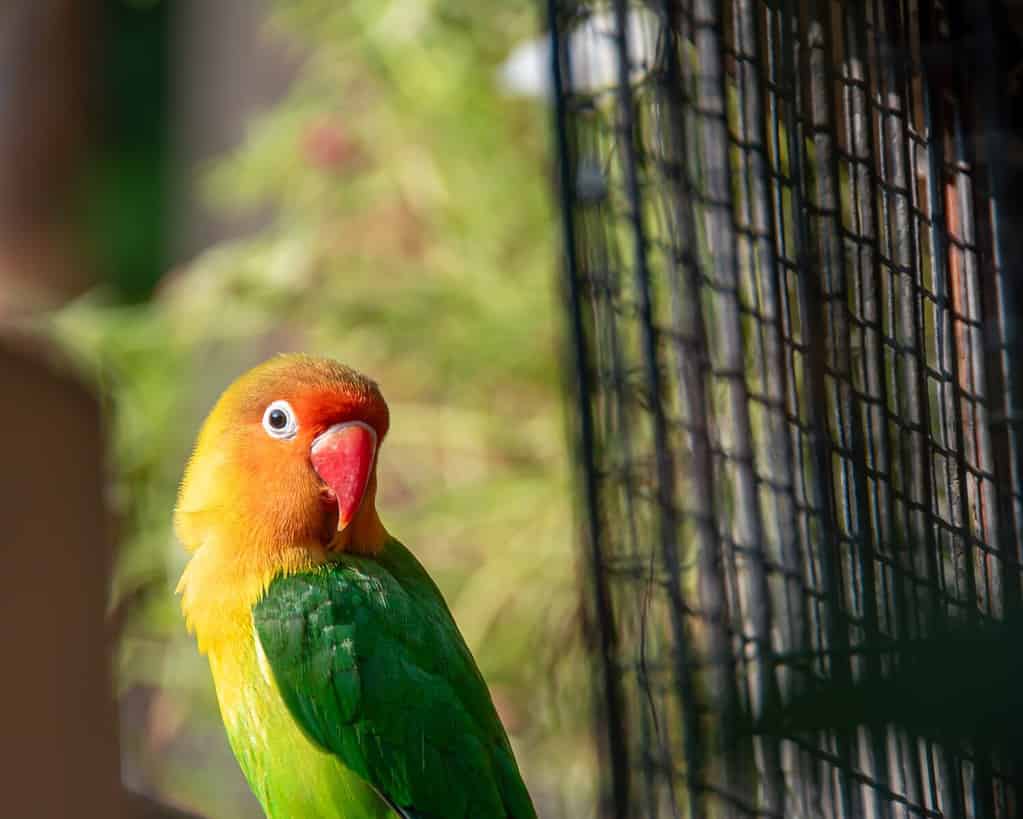
Fischer’s lovebirds tend to show aggression toward other species of birds.
©Eva Syarkawie/Shutterstock.com
3. Black-Cheeked Lovebird (Agapornis nigrigenis)
There are no known color variants of the black-cheeked lovebird. Their standard color is a green body, brown head, red beak, and white rings around the eyes. They have an orange patch below the throat that transitions into yellowish green. Their cheeks have a brownish-black color, which accounts for their common name. These are the most endangered of the nine lovebird species, so they tend to be more expensive than most.
Average price 2024: $80-$400

Back-cheeked lovebirds have only a small range left in the wild and are the rarest of lovebirds.
©iStock.com/Akatjomar
4. Yellow-Collared Lovebird (Agapornis personatus)
The yellow-collared lovebird is also called the masked lovebird, black-masked lovebird, or eye ring lovebird. These are dark green on the back and lighter green underneath. They have black heads, red beaks, white eye rings, and yellow collars and bibs. They tend to behave aggressively toward others of their species, so if housed with others, they need large cages.
Average price 2024: $80 – $400, depending on color mutations.
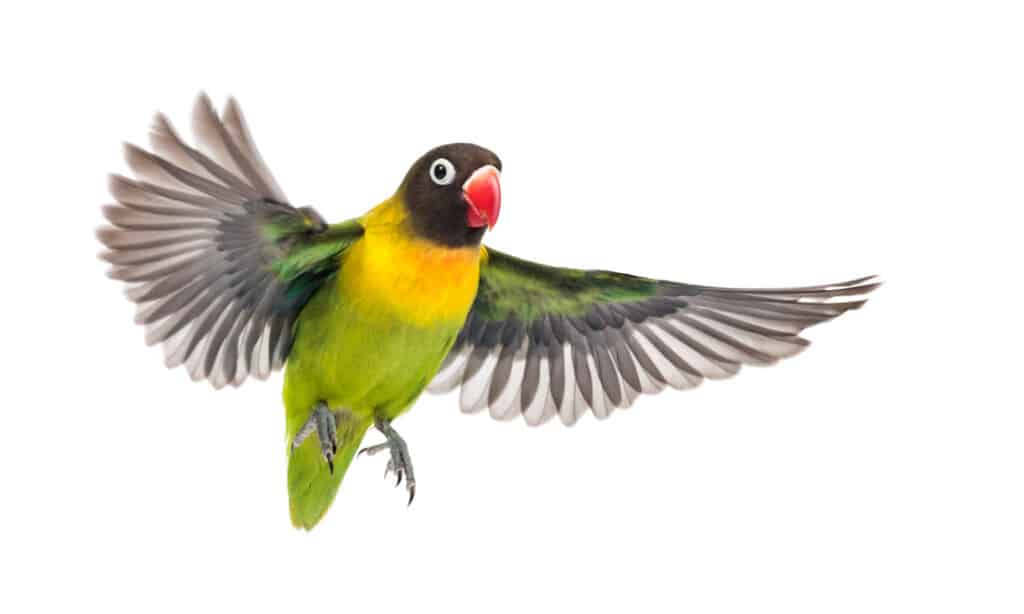
The yellow-collared lovebird shows off its colors especially well when it flies.
©iStock.com/GlobalP
5. Black-Winged Lovebird (Agapornis taranta)
Black-winged lovebirds, or Abyssinian lovebirds, are the largest species. On average, they are about 6.5 inches long. They are green all over but have red foreheads. They don’t breed well in captivity and are not commonly available as pets.
Average price 2024: $200 and up.

This pair of black-winged lovebirds illustrates the different coloration of males and females (all green).
©Eckhard Lietzow/Shutterstock.com
6. Grey-Headed Lovebird (Agapornis cana)
The grey-headed lovebird is also called the Madagascar lovebird. Green is the main color of both species: females are green all over, while males have grey upper bodies and green lower bodies. They are not usually bred in captivity. Reputedly, they are easy to train. They tend to cost a lot because they are relatively rare.
Average price 2024: $250 – $500
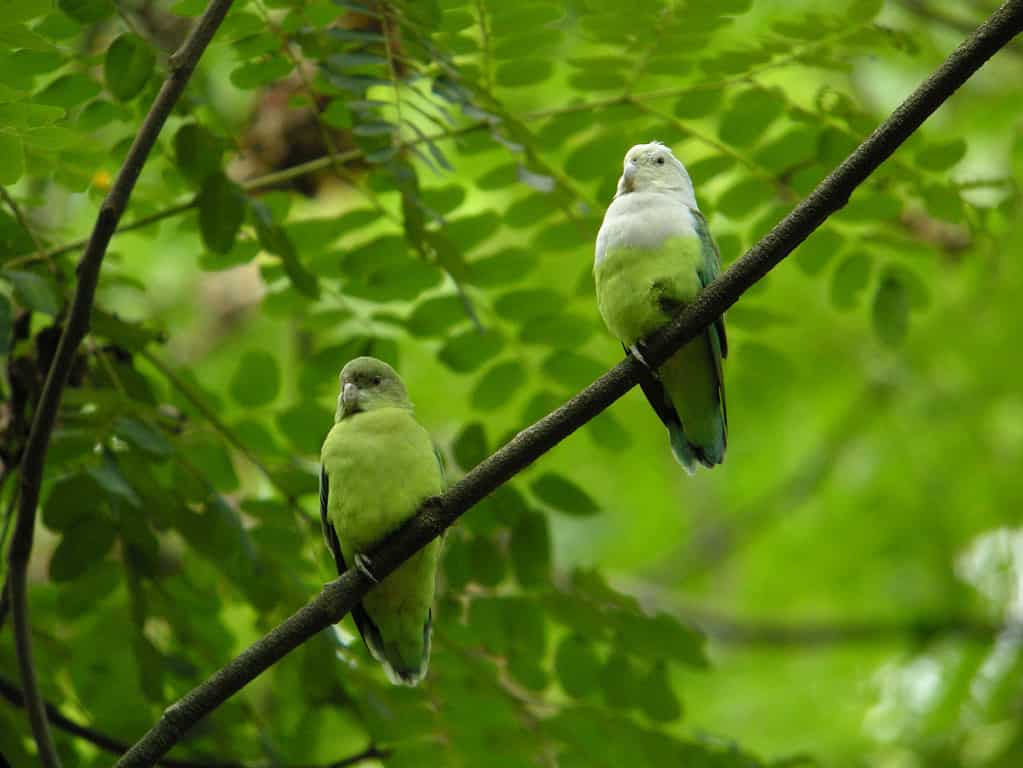
These are Madagascar or grey-headed lovebirds. The female is all green, while the male has some grey.
©Frank Vassen / Flickr – License
7. Red-Headed Lovebird (Agapornis pullarius)
Red-headed lovebirds are mainly green with lighter green under their wings. The males have red patches on their foreheads and cheeks; on females those patches are orange. Their beaks are red, and they have grey feet. Their temperament has been described as “nervous.” They are difficult to breed in captivity as they need very specific nesting conditions. They are rather rare as pets, so they are more costly. birds are quite rare and have higher prices than other typical lovebirds.
Average price 2024: $250 – $500
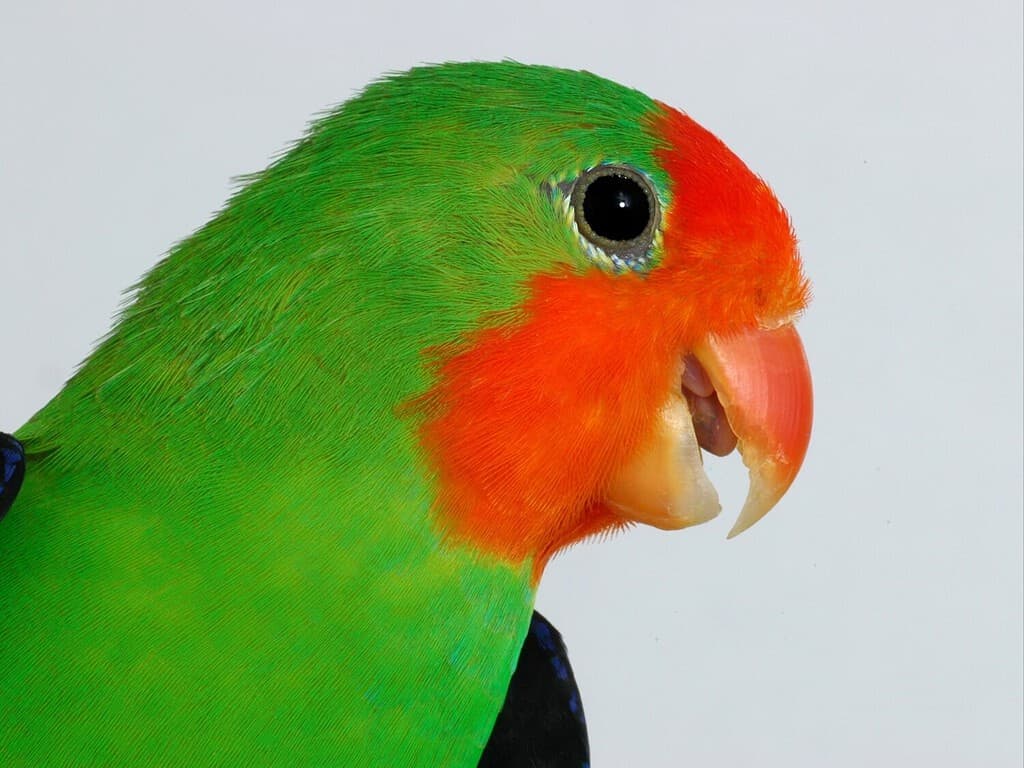
This vividly colored male red-headed lovebird is gorgeous.
©Eckhard Lietzow/Shutterstock.com
8. Black-Collared Lovebird (Agapornis swindernianus)
Black-collard lovebirds have a large range in Africa, so they are not particularly rare. At the same time, they are usually not kept in captivity because they require a diet based on one particular African fig species. These birds are mainly green but have black and brown markings around their neck, a brown-red chest, grey bill and feet, and distinctive yellow irises. They can be quite expensive due to the difficulty of finding them available as pets.
Average price 2024: $500 – $1,000
9. Lilian’s Lovebird (Agapornis lilianae)
This species of lovebird is mostly green. It has an orange upper chest and head. There are white rings around the eyes. They are similar in appearance to Fischer’s lovebirds, which are a little larger and have olive-green heads and a blue rump. They also look like the rosy-faced lovebird which doesn’t have the white eye ring. Lilian’s lovebirds are hard to raise in captivity.
Average price 2024: $500 – $1500
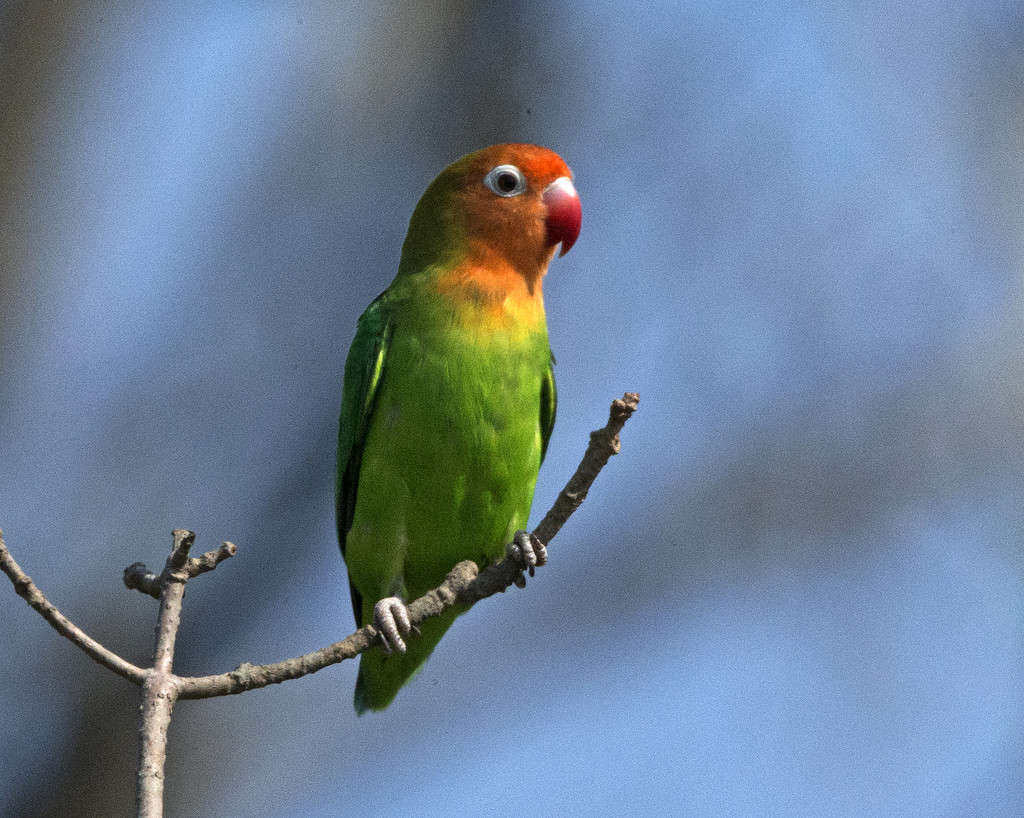
Lilian’s lovebird is difficult to raise in captivity.
©Lip Kee from Singapore, Republic of Singapore / CC BY-SA 2.0 – License
Additional Costs of Owning Lovebirds
In addition to the initial purchase price, you also need to budget for your pet’s daily expenses. Here’s a rough idea of what you might expect:
Initial Vet Exam ($50-$100)
After purchasing your pet, you’ll want to make an appointment with a veterinarian experienced in working with exotic birds. A professional will notice things that the bird’s owner might overlook. The vet will be able to advise you on proper care of your new bird and what you can expect as it matures. A general checkup could cost $50-$100 depending on the vet.
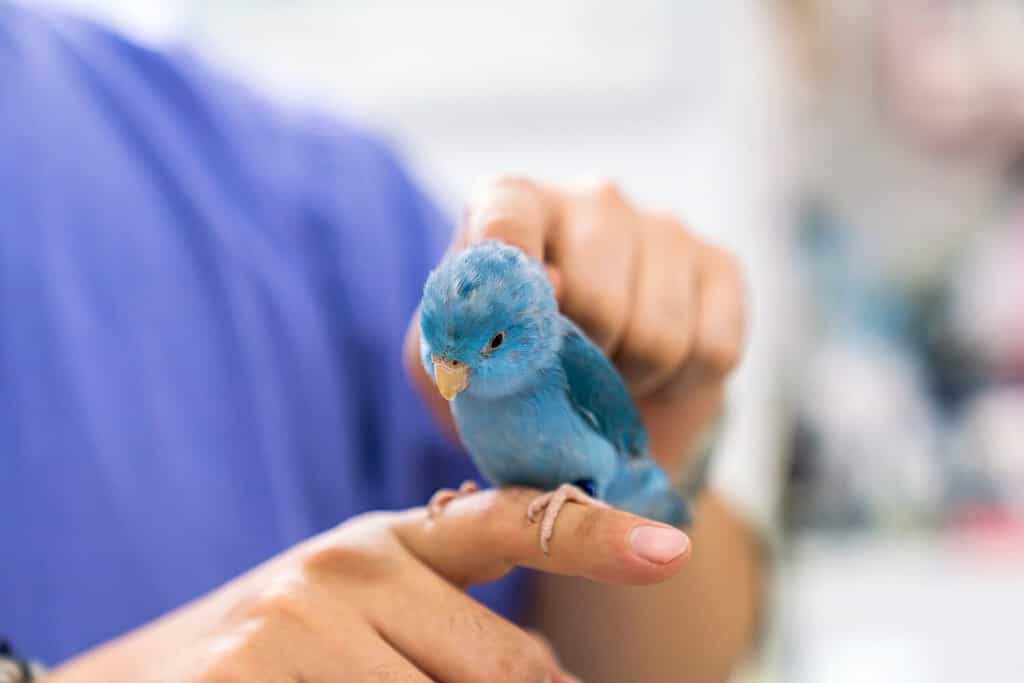
An exotic vet will be able to do an initial evaluation and alert you to potential health issues.
©thirawatana phaisalratana/Shutterstock.com
Lovebird Habitat: $230 (one-time)
Here are some of the things you’ll need to purchase to make a healthy habitat for your lovebird:
- Lovebirds need a cage with minimum dimensions of 24 x 24 x 24 inches. The cage should be larger if you have two or more lovebirds. The space between the bars should not be wider than 1/2 inch. The cost of a cage will average about $120.
- Your setup should include a cage cover to calm the bird at night. This costs about $25.
- The cage needs disposable liners to collect waste. You can use paper towels or newspapers to save money or purchase liners for about $20 for 50 sheets.
- Stainless steel food and water bowls are the most hygienic option. They might set you back $15 altogether.
- Lovebirds need perches made of wood or compressed seashells that will help wear down their claws. You should give them two to three to give them options. They’ll cost about $20 altogether.
- Toys are not just extras; they’re essential to keep your birds active physically and mentally. The types of toys they might like are ladders, fruit holders, and chew toys they can destroy like balls made of rattan, balsa wood, or other natural materials. An initial supply of toys might cost $25 but be prepared to replace them as they get torn up.
- A bathing dish for your bird can be any shallow dish it can splash around in. You probably already have one you can use, but otherwise, pick one up for $5 in a thrift store.
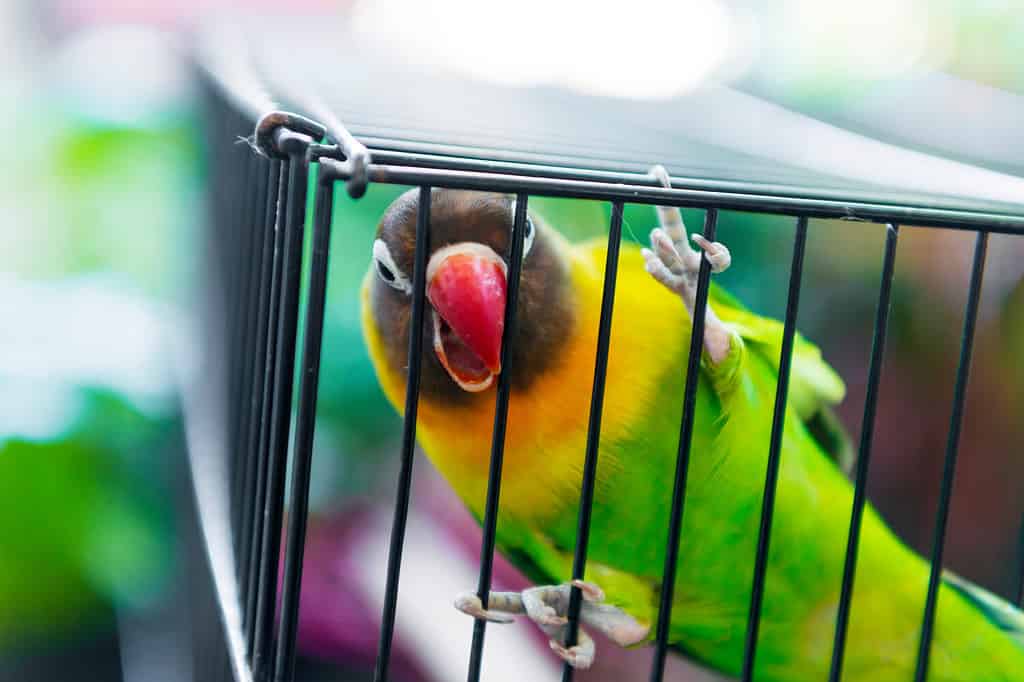
Bird cages come in all sorts of configurations. Make sure yours is equipped with perches and toys.
©leolintang/Shutterstock.com
Ongoing Lovebird Expenses ($55 a month)
- Food – Captive lovebirds eat pellets, nuts, seeds, fruits, and vegetables. Expect to spend $6-$24 a month.
- Cleaning supplies – Non-toxic cleaners, cleaning cloths, gloves, and cage liners might cost $10 a month.
- Veterinary care – Checkups and emergency care at the vet might cost $250 a year, averaging out to about $21 a month
Ways To Reduce Lovebird Expenses
Some ways you can reduce the costs of keeping a lovebird might include:
- Purchasing a used cage, and sanitizing it thoroughly.
- Buy supplies in bulk from an online supplier.
- Look up on the internet ways to make safe bird toys yourself.
- Provide excellent nutrition and veterinary checkups to avoid expensive medical problems later.

The beauty of lovebirds is multiplied when you have more than one!
©iStock.com/Akatjomar
Hopefully, you have the preliminary information you need to start making a decision about adopting one or more lovebirds of your own. With a little planning and care, these beautiful and affectionate birds will add color and interest to your life for many years.
The photo featured at the top of this post is © South O Boy/Shutterstock.com
Thank you for reading! Have some feedback for us? Contact the AZ Animals editorial team.






